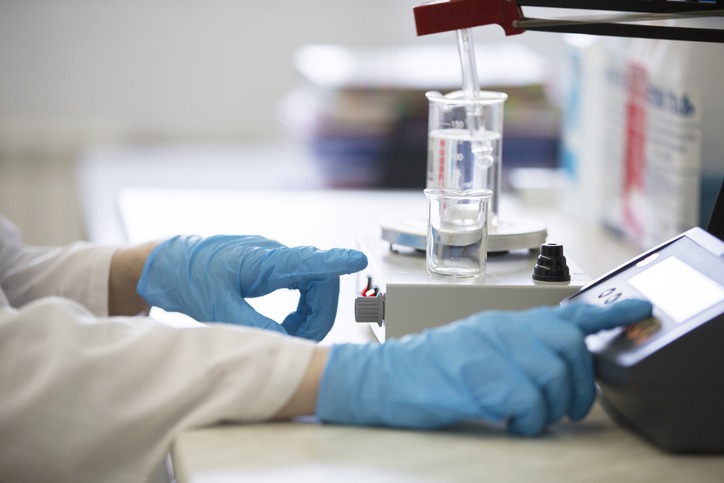How Can Lab Tests Help Diagnose My Pet’s Health Issues?

Taking care of a pet is both rewarding and challenging. Our beloved cats, dogs, and other animals can’t tell us what’s wrong when they feel unwell, often leaving pet owners and veterinarians to piece together a puzzle to diagnose health issues. Lab tests play a crucial role in this diagnostic process. From bloodwork to biopsies, these tests can provide critical insights that may not be apparent through a physical examination alone.
This article will explore ten essential ways lab tests can help diagnose your pet’s health issues.
1. Complete Blood Count (CBC)
A complete blood count (CBC) is a standard test that analyzes your pet’s blood components: red blood cells, white blood cells, and platelets. A CBC can help identify infections, anemia, and clotting issues by measuring these elements. For instance, an elevated white blood cell count often indicates an infection, whereas low red blood cells might signal anemia. This test is a cornerstone in diagnosing various diseases and guiding further diagnostic steps.
It can also help monitor the effectiveness of ongoing treatments. Administering a CBC is a crucial part of a pet diagnostic at vet lab facilities, ensuring that comprehensive evaluations are performed accurately. A CBC is often part of the initial veterinary visit for puppies and kittens, establishing a baseline for future reference.
2. Biochemical Profile
A biochemical profile examines various chemicals and enzymes in your pet’s blood to assess the functionality of vital organs such as the liver, kidneys, and pancreas. Elevated liver enzymes, for instance, can indicate liver disease, while abnormal levels of creatinine and blood urea nitrogen (BUN) may point to kidney issues.
This test provides a broad overview and is often used with other tests to get a complete picture of your pet’s health. Monitoring these values over time can help detect chronic conditions early and manage them more effectively. These profiles are beneficial in senior pets, where age may affect multiple organ systems simultaneously.
3. Urinalysis
Urinalysis analyzes your pet’s urine’s chemical composition, concentration, and microscopic structure. This test can detect urinary tract infections, kidney disease, diabetes, and other metabolic disorders. For example, elevated glucose levels in urine can be an early sign of diabetes, while the presence of crystals can indicate kidney stones.
Additional findings such as protein, blood, or pus in the urine give insights into other potential issues like infections or systemic diseases. Urinalysis is also valuable for monitoring the effectiveness of treatments and making adjustments as needed.
4. Fecal Examination
A fecal examination checks for parasites, bacteria, and other pathogens in your pet’s stool. This test is vital for identifying gastrointestinal infections and infestations like hookworms, roundworms, and giardia. Regular fecal exams are crucial for early detection and treatment, ensuring your pet remains healthy and parasite-free.
Chronic diarrhea, weight loss, and poor coat condition may all be signs of parasitic infections that a fecal exam can reveal. Based on these test results, Deworming protects your pet and reduces the risk of zoonotic infections transmitted to humans.
5. Thyroid Function Tests
Thyroid function tests measure the levels of thyroid hormones in your pet’s blood. Hyperthyroidism (overactive thyroid gland) and hypothyroidism (underactive thyroid gland) are common endocrine disorders that can significantly affect your pet’s quality of life. Symptoms like weight gain, lethargy, and hair loss in hypothyroid cases or weight loss, hyperactivity, and increased appetite in hyperthyroid cases can be managed effectively once diagnosed through these tests.
Regular thyroid monitoring can help adjust medication dosages to maintain balance, improving your pet’s quality of life.
6. Imaging Studies
Though not lab tests in the traditional sense, imaging studies like X-rays, MRIs, and ultrasounds are often considered diagnostic tools that complement lab tests. These imaging studies can provide visual confirmation of diseases, such as tumors, fractures, or internal bleeding, that lab tests alone might not reveal.
For example, an ultrasound can identify liver abnormalities that correlated lab tests might have suggested. Imaging is also crucial in guiding surgical procedures or biopsies, ensuring that interventions are as minimally invasive and targeted as possible.
7. Allergy Testing
If your pet has symptoms like itchiness, redness, or gastrointestinal issues, allergy testing can identify specific allergens triggering these reactions. Blood and intradermal skin tests can detect environmental allergens (like pollen and dust mites) and food allergens. Once identified, you can formulate a plan to limit your pet’s exposure, helping to alleviate their symptoms.
Additionally, ensuring your pet is up-to-date with their kitten vaccinations can prevent other health issues that might complicate their condition. Allergy testing is particularly beneficial in long-term management strategies, such as hypoallergenic diets or immunotherapy. It reduces reliance on medications and enhances your pet’s overall comfort.
8. Microbiological Cultures
Microbiological cultures involve growing bacteria, fungi, or viruses from samples taken from your pet (like swabs from the skin, ears, or wounds). These cultures can identify the specific type of microorganism causing an infection, allowing the veterinarian to prescribe targeted antibiotics or antifungal medications.
This is particularly useful in chronic or recurrent infections with failed initial treatments. Cultures also help identify antibiotic resistance trends, ensuring your pet receives the most effective treatment possible.
9. Histopathology
Histopathology involves examining tissues under a microscope to diagnose diseases like cancer. Biopsy samples from abnormal growths or masses are sent to a lab where a pathologist studies them for malignancy, type, and stage. Early detection through histopathology can make a significant difference in treatment outcomes.
This test is also used to understand the nature of inflammatory conditions, helping formulate long-term treatment plans. Follow-up biopsies can monitor treatment progress and provide insight into whether additional interventions are needed.
10. Genetic Testing
Genetic testing can help identify hereditary diseases your pet may be predisposed to. These tests are particularly relevant for purebred animals susceptible to specific genetic disorders. Knowing your pet’s genetic makeup can aid in early intervention and proactive management, improving their long-term health and quality of life. Scheduling a cat wellness exam at Animal Hospital of Redondo Beach can provide further insights into your feline friend’s genetic health, ensuring comprehensive care.
Genetic tests can also provide valuable information for breeding programs, helping to reduce the occurrence of inherited diseases in future generations. Early identification allows for preventive measures, dietary adjustments, and lifestyle changes that can mitigate the impact of genetic conditions.
Wrapping Up
Lab tests are indispensable in diagnosing and managing your pet’s health issues. From basic bloodwork to advanced genetic testing, these diagnostic tools allow veterinarians to identify problems early, prescribe accurate treatments, and monitor progress over time. As a pet owner, understanding the value of these tests can help you make informed decisions about your pet’s health, ensuring they receive the best possible care. Regular veterinary check-ups and appropriate lab tests can go a long way in safeguarding your furry, feathered, or scaly friend’s well-being.


